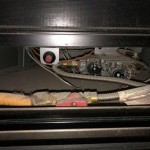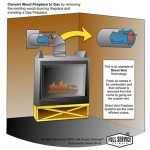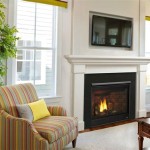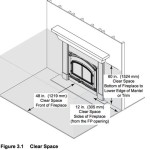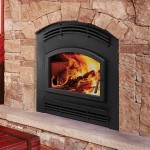Replacement Fireplace Screens With Doors: Enhancing Safety and Efficiency
Fireplaces offer a focal point for warmth and ambiance within a home. However, open fireplaces present inherent safety concerns and can be inefficient in retaining heat. Replacement fireplace screens with doors provide a practical solution to mitigate these issues, offering a combination of safety, aesthetic appeal, and improved energy efficiency. These screens act as a barrier, preventing sparks and embers from escaping the firebox while allowing for controlled airflow and optimized heat distribution.
The market offers a diverse range of replacement fireplace screens with doors, varying in materials, designs, and functionality. Understanding the different types available and their respective benefits is crucial for selecting the optimal screen for individual needs and fireplace configurations. This article will explore the key considerations when choosing replacement fireplace screens with doors, including material selection, door styles, mesh options, and installation procedures.
Key Considerations for Selecting Replacement Fireplace Screens With Doors
Selecting the appropriate replacement fireplace screen with doors requires careful consideration of several factors. These factors include the fireplace's dimensions, the desired aesthetic, the level of safety required, and the homeowner’s budget. Neglecting these considerations can result in a screen that is either functionally inadequate or aesthetically displeasing.
Firstly, accurate measurement of the fireplace opening is essential. The screen should fit snugly within the opening, preventing gaps through which embers could escape. Measurements should include the width, height, and depth of the firebox. Manufacturers typically provide sizing guides to assist in selecting the correct screen dimensions. A screen that is too small will not provide adequate protection, while a screen that is too large may be difficult to install and could potentially damage the fireplace surround.
Secondly, the aesthetic of the screen should complement the existing décor of the room. Screens are available in various finishes, including black, brass, nickel, and antique bronze. The style of the screen, such as traditional, contemporary, or rustic, should also align with the overall design of the fireplace and the surrounding living space. The goal is to select a screen that enhances the visual appeal of the fireplace rather than detracting from it.
Thirdly, safety is a paramount consideration. The screen should be constructed from durable materials and feature a fine mesh that effectively prevents sparks and embers from escaping. The doors should be sturdy and securely latched to prevent accidental opening. Additionally, the screen should be regularly inspected for any signs of damage, such as tears in the mesh or loose hinges, and repaired or replaced as needed.
Finally, budget constraints should be considered. Replacement fireplace screens with doors range in price depending on the materials used, the complexity of the design, and the brand. It is important to establish a budget and then explore the available options within that price range. While it may be tempting to opt for the least expensive option, it is essential to prioritize safety and durability over cost. A higher-quality screen will provide better protection and last longer, ultimately representing a better investment.
Material and Construction
The materials used in the construction of replacement fireplace screens with doors significantly impact their durability, appearance, and heat resistance. Common materials include steel, iron, and occasionally, stainless steel. Each material offers distinct advantages and disadvantages.
Steel is the most commonly used material due to its affordability and strength. Steel screens are typically coated with a high-temperature paint or powder coating to protect them from rust and corrosion. Powder coating provides a more durable finish than paint and is less likely to chip or peel. The gauge of the steel used also affects the screen's durability; thicker steel provides greater resistance to warping or bending under high heat.
Iron screens are known for their robustness and traditional aesthetic. Iron is a denser material than steel, providing excellent heat resistance and durability. Iron screens are often more ornate in design, featuring intricate scrollwork or decorative accents. However, iron is also more susceptible to rust and requires regular maintenance to prevent corrosion. Iron screens are typically more expensive than steel screens due to the higher cost of the material and the more complex manufacturing processes involved.
Stainless steel screens offer superior corrosion resistance and a contemporary appearance. Stainless steel is a durable and low-maintenance material that does not require painting or coating. Stainless steel screens are often used in modern or minimalist fireplace designs. However, stainless steel is typically more expensive than steel or iron, making these screens a less common option.
The construction of the screen is equally important. Welds should be strong and smooth, ensuring that the frame is structurally sound. Hinges and latches should be made from durable materials and operate smoothly. The mesh should be securely attached to the frame, preventing gaps through which embers could escape. The overall construction quality should reflect the price of the screen and ensure that it will withstand years of use.
Door Styles and Mesh Options
Replacement fireplace screens with doors offer various door styles and mesh options, each providing distinct benefits regarding accessibility, safety, and aesthetic appeal. Understanding these options helps in selecting a screen that meets specific needs and preferences.
Common door styles include bi-fold doors, single-panel doors, and track doors. Bi-fold doors consist of two panels that fold inward, allowing for easy access to the firebox. Single-panel doors swing open like a traditional door, providing a wide opening for tending to the fire. Track doors slide horizontally along a track, offering a space-saving solution for smaller fireplaces. The choice of door style depends on the size of the fireplace opening, the available space in front of the fireplace, and personal preference.
The mesh is a critical component of the screen, providing a barrier against sparks and embers. The mesh material and weave determine its effectiveness in preventing fire hazards. Common mesh materials include woven steel and expanded metal. Woven steel mesh provides a fine barrier against sparks, while expanded metal mesh offers greater strength and durability. The mesh should be securely attached to the frame and free of any tears or holes.
Mesh options also include different weave patterns and thicknesses. Finer weave patterns provide better protection against smaller sparks, while thicker mesh offers greater resistance to damage. Some screens also feature tempered glass doors in addition to the mesh. Glass doors provide a clear view of the fire and help to reduce drafts when the fireplace is not in use. However, glass doors can become hot during operation and should be handled with care.
The selection of door style and mesh option should be based on a balance of safety, convenience, and aesthetic preference. A screen with sturdy doors and a fine mesh will provide the best protection against fire hazards, while a screen with an aesthetically pleasing design will enhance the overall look of the fireplace.
Installation and Maintenance
Proper installation of a replacement fireplace screen with doors is crucial for ensuring its safety and functionality. While some homeowners may choose to install the screen themselves, professional installation is recommended, particularly for complex installations or those involving alterations to the fireplace surround. Regular maintenance is also essential for prolonging the life of the screen and maintaining its safety and efficiency.
Before installation, carefully review the manufacturer's instructions and gather the necessary tools, including a measuring tape, screwdriver, drill, and level. Ensure that the fireplace opening is clean and free of any debris. Carefully position the screen in the opening, ensuring that it fits snugly and securely. Use shims if necessary to achieve a level and even fit. Secure the screen to the fireplace surround using screws or anchors, following the manufacturer's instructions. Test the doors to ensure that they open and close smoothly and latch securely.
Regular maintenance should include cleaning the screen and inspecting it for any signs of damage. Clean the screen with a soft cloth and mild detergent to remove soot and grime. Avoid using abrasive cleaners, which can damage the finish. Inspect the mesh for any tears or holes and repair or replace it as needed. Check the hinges and latches to ensure that they are operating smoothly and lubricate them if necessary. Inspect the frame for any signs of rust or corrosion and treat it with a rust inhibitor.
The frequency of maintenance depends on the frequency of fireplace use. For fireplaces that are used regularly, cleaning and inspection should be performed at least once a month. For fireplaces that are used less frequently, cleaning and inspection can be performed less often. By following these installation and maintenance guidelines, homeowners can ensure that their replacement fireplace screen with doors provides years of safe and efficient operation.

Standard Size Masonry Fireplace Doors Fixed Frame

Fireplace Glass Doors Vs Screens Full Service Chimney

Fireplace Doors Houston Home And Patio

Fireplace Glass Doors Vs Screens Full Service Chimney

Pleasant Hearth Arrington Fireplace Door Doors

Pilgrim Iron Gate Arched Fireplace Door Screen Authenteak

Prefab Fireplace Doors Large Selection Affordable

Barton 4 Panel Wrought Iron Fireplace Screen Fire Spark Guard Hinged Doors With Tools 96323 The Home Depot

Prefab Fireplace Doors Large Selection Affordable

Allen Roth Monroe Black Large Cabinet Style Fireplace Doors With Smoke Tempered Glass In The Department At Com
Related Posts


